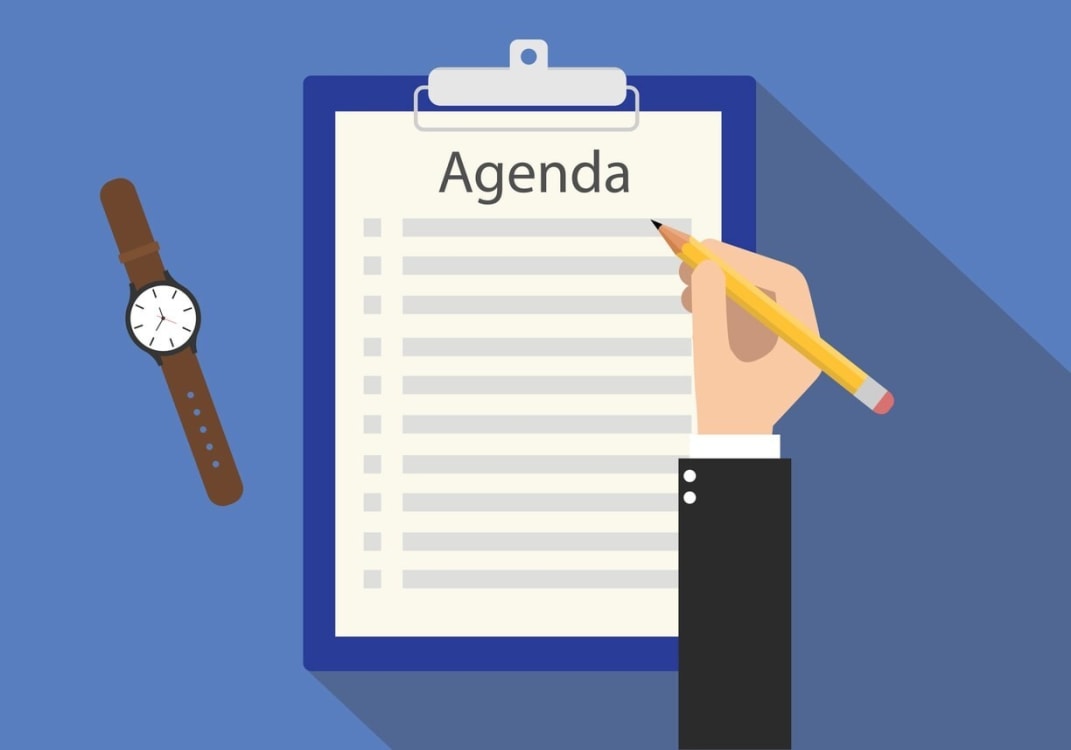Tired of daily standups that feel like a waste of time? When done right, these quick check-ins can be one of the most powerful tools for team alignment and collaboration. A good standup keeps everyone on the same page, highlights roadblocks early, and helps the whole team move faster. In this article, we’ll break down how to run a daily standup that actually works, including who should be there, what to avoid, and tips to keep things quick, useful, and even a little fun.
Key Takeaways
- Daily standup meetings are brief, focused gatherings designed to promote accountability and transparency within Agile teams, typically lasting around 15 minutes.
- Each participant addresses three core questions to provide updates on their work, helping to maintain team alignment and identify obstacles without delving into detailed discussions.
- Best practices for effective standups include adhering to time limits, keeping discussions relevant, and utilizing tools for enhancing communication, especially in remote or distributed teams.
Understanding Daily Standup Meetings

A daily standup meeting is a brief, routine gathering where:
- Team members share their progress and any obstacles they encounter.
- It promotes transparency and collaboration among team members.
- Standing during these daily meetings helps keep the discussions brief and focused. Additionally, status meetings can serve as a valuable tool for tracking overall progress.
These meetings are a staple of Agile workflows and offer instant benefits, including scrum ceremonies.
The primary aim of daily standups is to keep everyone aligned and accountable without diving into minute details. This alignment fosters a sense of responsibility and helps in maintaining a clear understanding of project progress. High-level discussions during daily standups keep everyone updated on the project’s status and next steps.
There are different types of Agile standup meetings, including Scrum and Kanban. In Scrum stand-ups, participants answer three specific questions to maintain accountability for their tasks. In contrast, Kanban stand-up meetings focus more on identifying and resolving bottlenecks rather than detailing individual tasks. Understanding these variations can help tailor the meetings to your team’s specific needs.
Key Participants in Daily Standups
The core participants in daily standup meetings typically include developers, Scrum Masters, and Product Owners. The Scrum Master is responsible for identifying and removing obstacles that hinder the team’s progress towards the sprint goal, while the Product Owner addresses team questions and stays informed about the sprint’s progress. Fully dedicated development team members are expected to attend daily standups to ensure consistency and communication.
In addition to the core team, high-level managers, project managers, and other stakeholders may also attend daily standups. However, participation is generally limited to no more than 10 participants to maintain efficiency. Members outside the core team can attend as observers but typically do not participate in the discussions.
The Three Core Questions of a Daily Standup
|
Question |
Purpose |
|
1. What did you do yesterday? |
Share progress and completed tasks. Helps everyone stay informed. |
|
2. What are you working on today? |
Align on current priorities and upcoming tasks. Keeps focus on short-term goals. |
|
3. Are there any blockers or obstacles? |
Surface issues early so the team can address them quickly. |
Format and Timing
- Each team member answers the questions in order.
- Keep responses short and focused; 2 to 3 minutes per person.
- This structure ensures clarity, focus, and accountability.
Why This Format Works
- Maintains alignment on goals and progress.
- Encourages transparency across the team.
- Highlights roadblocks early, so they don’t slow everyone down.
- Boosts team accountability with daily check-ins.
Structuring Your Daily Standup Meeting

Daily standup meetings typically have the following characteristics:
- They are time-boxed to last approximately 15 minutes.
- A designated leader, often the Scrum Master, helps moderate discussions.
- The leader keeps the meeting focused on the daily scrum meeting agenda.
- This ensures the meeting stays on track and does not deviate into unrelated topics.
Two common formats for conducting standup meetings are ‘Round Robin’ and ‘Walking the Board’. In the ‘Round Robin’ format, each team member provides their updates in turn, while in ‘Walking the Board,’ the team reviews the Scrum board and discusses progress on specific tasks. Both formats aim to provide updates on progress and any barriers to meeting sprint goals.
To keep standup meetings effective:
- Keep the meeting content structured and relevant to avoid extraneous information.
- Postpone problem-solving conversations until after the standup to maintain focus on quick updates.
- Utilize a repeatable agenda to ensure smooth and efficient standups.
Common Pitfalls and How to Avoid Them
One common mistake in daily standup meetings is allowing them to run too long, sometimes lasting up to half an hour instead of the recommended 15 minutes. This can be mentally draining for participants and causes a loss of focus and energy. Adhering to strict time limits and keeping discussions concise can prevent this issue and encourage participants to talk more effectively.
Turning daily standups into problem-solving sessions can lead to elaborate discussions that deviate from the meeting’s purpose. Instead, issues requiring in-depth conversation should be scheduled to discuss problems in follow-up meetings. This ensures that the standup remains focused on quick updates rather than detailed problem-solving.
Disengagement can occur if daily standups become monotonous or unengaging. Participants may tune out peer reports, affecting the meeting’s effectiveness. Open communication and clearly defined expectations can help alleviate these challenges, ensuring that everyone remains focused and engaged.
Best Practices for Effective Daily Standups

Establishing clear agendas helps direct conversations and keeps the team focused on key topics during the daily standup. Meetings should aim to be less than 10 minutes to maximize efficiency and engagement. This ensures that all team members actively participate without feeling overwhelmed.
To keep meetings efficient and on time:
- Focus on specific issues and avoid lengthy discussions to prevent meetings from running overtime.
- Encourage concise updates so everyone has the opportunity to speak without the meeting dragging on.
- Maintain a consistent schedule for daily standups to reinforce team routines and enhance participation, making effective meetings short.
Avoiding side discussions during standups keeps the focus on relevant updates and maintains the meeting’s efficiency. Following these best practices ensures that daily standups remain effective and engaging.
Tools for Enhancing Daily Standup Meetings
Using meeting software tools can enhance the visibility of progress and dependencies among team members, improving collaboration. Tools like Kumospace support both synchronous and asynchronous daily standups, progressing with features like automated summaries to keep everyone informed, including the development team.
Standuply enables asynchronous meetings with configurable templates and a collaborative knowledge hub for recurring answers. Geekbot automates the collection of updates from team members during asynchronous standups, simplifying team communication. Jell allows teams to create customizable question templates to meet asynchronous check-ins, enhancing engagement.
Parabol provides a virtual space for both synchronous and asynchronous standups, making it suitable for remote teams and many teams. DailyBot automates team check-ins and includes mood surveys to foster a positive culture. StatusHero and Range offer features that centralize team check-ins and individual progress monitoring, making them effective for hybrid teams.
Remote and Distributed Team Standups

Remote teams may face difficulties in scheduling daily standup meetings due to different time zones, making it hard to find a convenient meeting time. To effectively conduct daily standups, remote teams can utilize video conferencing tools or opt for asynchronous updates. This flexibility allows team members to update their progress at their convenience.
Establishing asynchronous communication spaces is crucial. This inclusion helps remote or distributed employees participate effectively in meetings. Quick asynchronous standup updates via channels like Slack can reduce scheduling conflicts and save time. Providing a conference line or digital space for remote updates ensures inclusivity and active participation from all team members.
Involving remote team members in discussions can be facilitated through digital collaboration tools to ensure inclusivity. Real-time collaboration during standups can be enhanced by utilizing digital workspaces, ensuring that all team members feel connected and engaged within distributed teams. Team members involved in these processes can significantly improve communication and productivity.
Scheduling and Timing of Daily Standups
A consistent schedule for daily stand-ups maintains team communication and participation. Holding them at the same time each day helps with engagement and predictability.
Morning is generally the best time to hold a daily standup meeting. It’s advisable to schedule these meetings during productive times when team members are generally most alert. For remote teams, considering time zone differences is essential to find a suitable time for everyone.
Benefits of Daily Standup Meetings

The daily scrum meeting helps synchronize the team’s work and adapt the daily plan. Regular standups help maintain team alignment on objectives and progress towards sprint goals. Participants hold each other accountable for tasks and progress, enhancing overall productivity during daily scrum meetings. The Scrum Guide provides additional insights into effective practices.
Daily standup meetings enhance communication by:
- Ensuring team members convey essential updates efficiently
- Allowing for early detection of issues, helping to address obstacles before they escalate
- Enabling participants to help identify solutions to progress blockers, fostering a collaborative environment
Daily standups can also boost team morale by fostering a sense of connection and appreciation for contributions. Improved team dynamics and a stronger sense of accountability are additional benefits that contribute to the overall success of the project.
Summary
In the end, a well-run daily standup can make a big difference. By sticking to the three core questions and keeping things short and focused, teams stay aligned, obstacles get addressed early, and everyone stays accountable. It’s a simple habit that, when done right, leads to better communication, stronger collaboration, and real progress, one day at a time.
The primary purpose of a daily standup meeting is to discuss daily progress, align the team, and identify any blockers, ensuring everyone stays informed and coordinated.
A daily standup meeting should last no more than 15 minutes to ensure it remains concise and focused. This time frame helps to maximize productivity and engagement.
Daily standup meetings should be attended by core participants including developers, Scrum Masters, and Product Owners, while high-level managers can join as observers. This ensures all key roles are aligned and informed.
The three core questions asked during a daily standup are: What work did you accomplish yesterday? What are your plans for today? Are there any obstacles hindering your progress?
Remote teams can effectively conduct daily standups by using video conferencing tools like Kumospace for real-time communication or implementing asynchronous updates to accommodate various schedules. This approach fosters inclusivity while maintaining team engagement.





